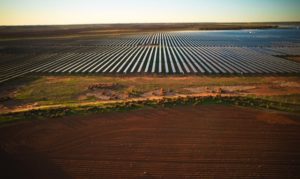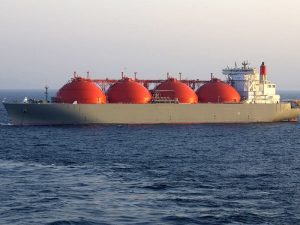Silex Systems has announced the practical completion of its 1.5MW concentrating photovoltaic (CPV) solar power demonstration plant in Mildura, Victoria, with all 40 of the facility’s CPV dishes connected and now feeding power into the national grid.
Silex subsidiary Solar Systems made the announcement on Tuesday morning, describing the occasion as a “major milestone” on the road to commercialisation of its unique ‘Dense Array’ CPV technology.
The plant’s CS500 dishes are each made up of more than 100 curved mirrors which reflect sunlight and concentrate it to 500 times its normal intensity. This sunlight is then directed onto a receiver of densely packed, highly-efficient, solar cells, and then converted into energy at 43 per cent efficiency – generally regarded as the highest in the world.

Silex CEO Michael Goldsworthy, who describes the technology as potentially “game-changing,” says the company is also excited about the economic potential of the technology, for Solar Systems and for Silex shareholders.
“If successfully commercialised, the deployment of utility-scale solar power stations around the world has the ability to generate hundreds of millions of dollars in annual revenues within a few years,” Dr Goldsworthy said.
The Mildura-based plant, which is scheduled to open officially on July 17, has a power purchase agreement with Diamond Energy, and should generate enough electricity to power up to 500 average-sized homes.
The successful operation of the plant over the next 12 months is hoped to validate the Dense Array CPV technology’s performance efficiency, energy yields and reliability, as part of Solar Systems’ commercialisation strategy.
The company also has plans for a Mildura Stage 2 100MW solar power station project – subject to $110 million in government funding contributions – and hopes to secure other major 10-50MW project opportunities in Australia, with pre-feasibility of prospective sites in Queensland already underway.
Also high on the agenda are plans to continue efforts to drive down the levelised cost of energy (LCOE) to the key target of 10c/kWh, or below; as well as embarking on major solar projects in key off-shore markets like Saudi Arabia and the US.
Silex is already working on the construction of a 28-dish 1MW demonstration facility at the Nofa Equestrian Resort near Riyadh, Saudi Arabia, with plans to have it completed later this year. The Nofa plant will be the first offshore facility using Solar Systems’ ‘Dense Array’ CPV Dish technology.










